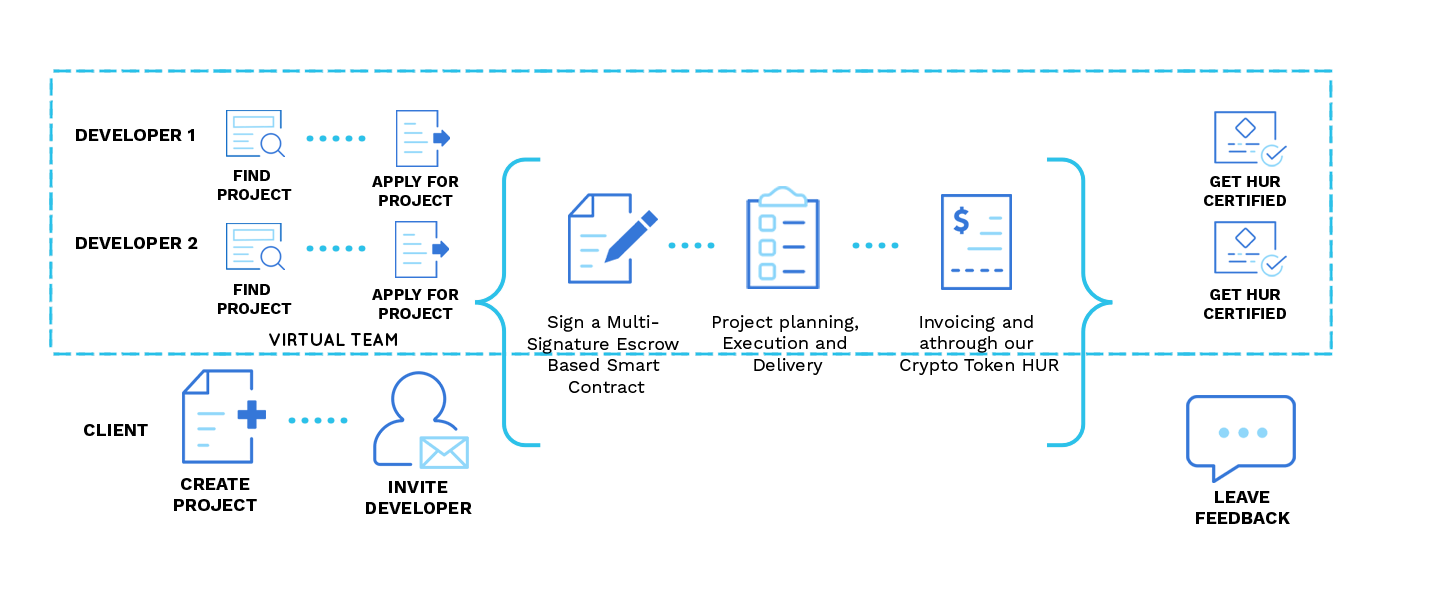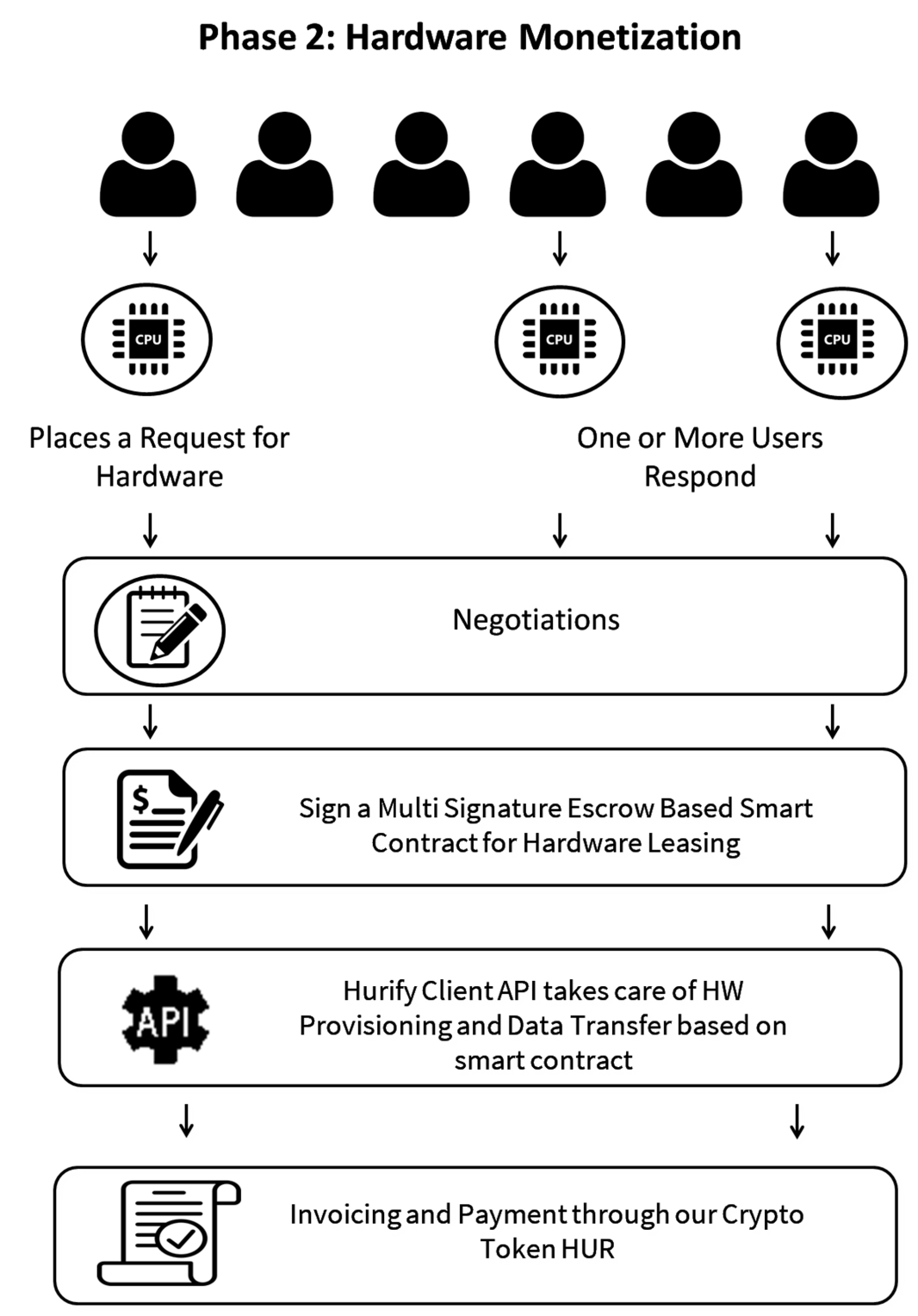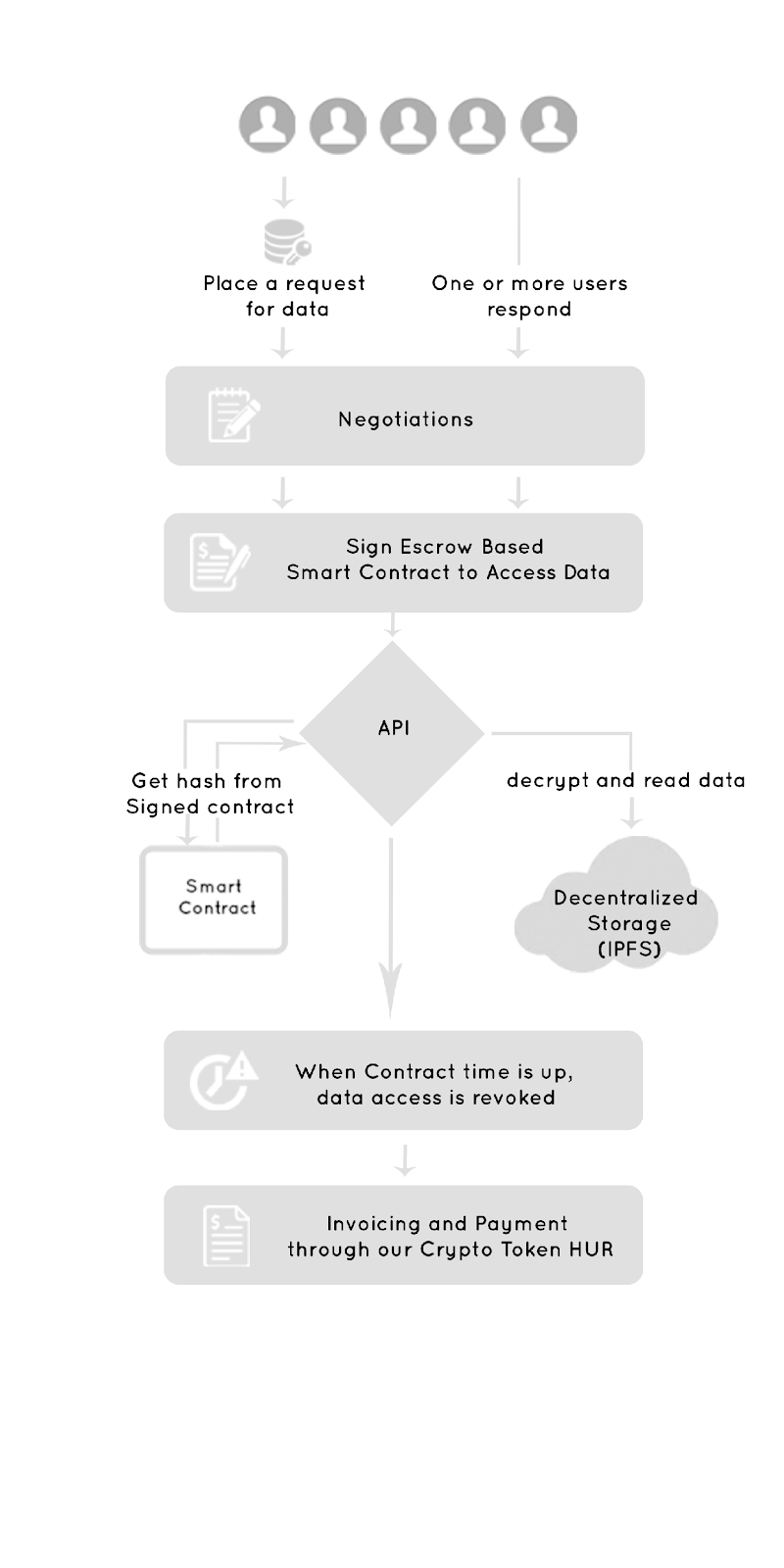Blockchain-powered IoT (Internet of Things) marketplace Hurify is set to launch its service offerings during the course of 3 distinct phases. In this article, we look at each of these in turn, including the CAAS, HAAS, and DAAS phases.
You can learn more about this niche startup empowering IoT developers and their clients in our articles What Is Hurify? and Hurify ICO: Support the Future of IoT Development. You may also be interested in the team behind Hurify.
Phase I
Service Implementation Offers Capability as a Service (CAAS)
Developing an IoT product is no mean feat. A lot of complexity goes into creating something that will span time and space to intricately connect all aspects of your life across machines, devices, and gadgets.
For developers, there are a lot of elements to link in order to make those connections happen. Hardware sensors, gateways, middleware, cloud, and data analytics are all part of the expertly prepared IoT soup. For businesses wanting to develop IoT solutions, looking for a developer with the Holy Grail skills set of IoT technology, integration, data management, analytics, and app development is akin to making “walk on water” a job requirement.
An estimated 49 percent of CIOs anticipate experiencing IT skills shortages in their departments. With such a specialized field as IoT, attracting – and then retaining – highly skilled employees is a Herculean task that very few organizations are able to manage. Outsourcing is often the only solution, but even this produces its own set of challenges.
Hurify likens development of IoT products to building a puzzle. In order to create and launch a successful IoT solution, pieces must slot in just right… the Goldilocks Effect, basically. In practice, however, this can be quite tricky.
As IoT gains more traction in the marketplace, scores of companies contribute to the infrastructure development needed for IoT to flourish. At the same time, this causes a service-offering fragmentation. A client wishing to develop an IoT solution usually ends up having to rope in multiple development partners in order to bring a brainchild to market.
More often than not, such development partners cater to specific domains, thus influencing the entire pipeline of subcontracting developers. As independent as they claim to be, IoT companies are few and far between. Most IoT companies build High Productivity Application Platforms as a Service (hPa PaaS) solutions. Yet little is being done to expand the ground-level talent problem, namely, an industry-wide lack of core IoT development capabilities.
During Phase I of Hurify’s tiered roll-out, this is the first issue they address. Through its marketplace, the Hurify platform affords developers the opportunity to work on IoT product development opportunities that enable them to master new and cutting-edge IoT capabilities.
For clients, Hurify offers service implementation that provides Capability as a Service (CAAS). Through the adoption of CAAS, businesses are able to effectively leverage diverse IoT capabilities without the headache of manually partnering with various IoT service providers. This consists of application abstraction layers that help integrate easier and faster IoT development.
As an innovative smart contract platform, Hurify works to bridge the gaps between IoT solution builders and world-class IoT experts. Hurify’s blockchain marketplace facilitates connections between clients wanting to create IoT products and the crème de la crème of developers who are able to build such products. Developers list their services for free, which IoT clients are able to browse. Payment for developer services takes place via multi-signature escrows on the trustless Ethereum blockchain.
Some of the advantages of Hurify’s first phase are:
- Builds reputation and client base for the best of IoT developer talent
- Facilitates client finding the right talent for their IoT development work
- Cryptocurrency payments for international partnerships
- Decentralized Ethereum-based platform driven by smart contracts
- Gives clients the opportunity to specify their own terms and conditions
- Immediate payment for completed development projects
- Quick concept to prototype transition
- Lower IoT development cost with no additional charges or fees
- Multi-signature escrow between client and developer
- Payments made directly between buyer and seller
- Personal information doesn’t have to be shared

Phase II
Service Implementation Offers Hardware as a Service (HAAS)
During this phase, Hurify will implement its HAAS offering. Hardware monetization is usually associated with the leasing or renting of devices that range from servers to sensor nodes. It can also refer to the leasing of compute power or storage on the various devices. In the case of the Hurify platform, users will lease IoT hardware to other users, including gateways, sensors nodes, and smart sensors that can run the Hurify client SDK.
Through this peer-leasing facility, Hurify creates an opportunity for individuals and organizations of all sizes to create IoT solutions. In the process, users are able to monetize their devices and costly middlemen are eliminated. Hurify’s proprietary API allows for the provisioning of hardware using smart contracts for access and other credentials.
Users can advertise or request specific types of hardware devices. Other users who possess such hardware can enter into a negotiation with the requestor, agreeing on a timeframe and monetary details of such a lease. By signing a multi-signature smart contract on the Ethereum mainnet, funds are held in escrow. After the stipulated time specified in the smart contract, data access is revoked and payment is initiated via the client-side SDK.
The following workflow illustrates the process:

HAAS on the Hurify platform consists of 3 distinct layers:
- Application: This layer functions as a user-facing layer that presents an elegant, intuitive, and aesthetically pleasing UI to Hurify platform users.
- API: The API layer caters to the implementation of Hurify’s core business logic as a hardware monetization network. It provisions hardware, maintains credentials, accesses tokens, reads smart contracts, and provides and revokes access.
- Client SDK: This SDK layer runs alongside the API to allow provisioning requests, grant and revoke access, etc.
Phase III
Service Implementation Offers Data as a Service (DAAS)
In its third and final launch phase, Hurify will offer data monetization. This process allows users to turn their data into currency (whether in the form of actual currency, denoting data to be used as a bartering device, or product or service enhancement).
By using Hurify, users are able to commoditize the various types of immutable IoT data they possess by exchanging it with individual and corporate collectors and developers for agreed-upon monetary or bartering remuneration. To a large extent, this P2P data and value transfer is not possible in the current marketplace. Thanks to Hurify, however, data can be shared cross-industry, without the need for intermediaries.
The Hurify Platform allows for a combination of multiple decentralized technologies, including InterPlanetary File System (IPFS) and EOS, and can even be deployed on a private blockchain. Data sharing occurs thanks to Hurify’s proprietary API, and data sharing takes place via such systems as IPFS and EOS.
Similar to the logistics behind Hurify’s HAAS service, users will be able to advertise or request specific types of IoT data, and negotiations will likewise take place via multi-signature smart contracts and an escrow fund arrangement.
Thanks to Hurify’s deployment of decentralized file systems, their own API, and smart contracts, users are able to access IoT data for operational, research, and/or educational purposes.
The process occurs as illustrated below:

Hurify’s data monetization consists of 3 distinct layers, which function in a similar fashion to the company’s HAAS capability. We look at each of these in turn.
- Application: This layer functions as a user-facing layer that presents an elegant, intuitive, and aesthetically pleasing UI to Hurify platform users.
- API: The API layer caters to the implementation of Hurify’s core business logic as a data monetization network. It maintains credentials, accesses tokens, reads smart contracts, and provides and revokes access.
- Decentralized storage (IPFS): The Decentralized storage layer provides the perfect repository for storing immutable data that can be tightly coupled with access restrictions; access can be revoked at any time.
Timeline
As per Hurify’s roadmap, the company expects to release version one during Q1 2018. In this release, the following features will be available:
- Escrow smart contract
- IoT service marketplace
- Job management
- HUR Payment
Version 2 is expected during Q2 2018 and will comprise these additional features:
- Video and voice calling
- Messaging
- Q&A
- Forums
Version 3, which coincides with Phase II, the HAAS phase, will add the following during Q3 2018:
- IoT hardware rentals
- Advertising solution on Hurify
And finally, version 4 in Q4 2018, will bring:
- Rewards and incentives for service providers
Conclusion
Hurify is building a groundbreaking platform that will marry clients’ needs with developers’ expertise, and in the process further the IoT landscape greatly.
To learn more about the Hurify ICO, visit their ICO page or join their Telegram group.

